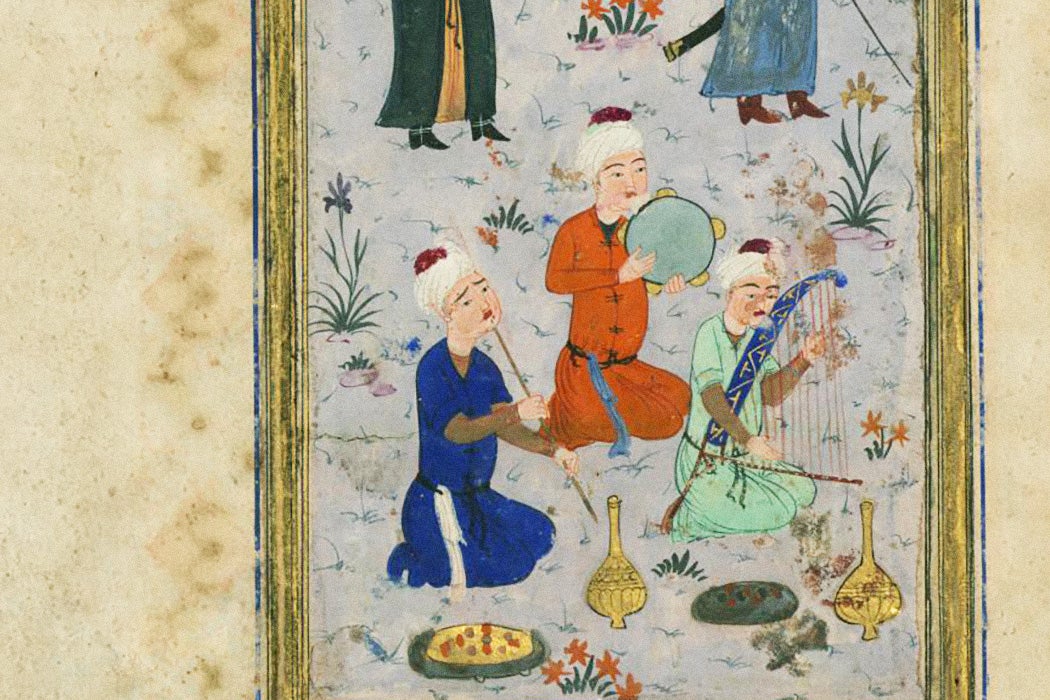As Islam spread across the Arabian peninsula and the Mesopotamian region during its first centuries, its leaders adopted and sometimes transformed existing traditions. As historical musicologist Lisa Nielson writes, this process dramatically changed the relationship between gender and musicianship.
Since 3000 BCE, musicians in the region were usually women—mostly enslaved women who often also served as concubines, Nielson explains. But noble women and priestesses might also play instruments or compose hymns. There was also a long tradition of musicianship by people with a mixture of gender traits, who we might view as transfeminine or belonging to a nonbinary gender.
“Certain cultures, like Sumer, had a concept of three, possibly four genders, and many of these individuals were musicians, priests or artists,” Nielsen writes.
In pre-Islamic Arabia, the tradition of enslaved concubine-musicians continued, mainly in the form of “singing girls”—professional musicians who sang and played lutes or other instruments. They might be hired to perform in taverns or for private, wealthy audiences. Poetry of the time often associated them with wine, either literally, since they might serve refreshments, or metaphorically, in descriptions of their intoxicating beauty.
Until the late seventh century, free Arab men were prohibited from performing music professionally. However, the musical path was open for a category of people pejoratively labeled mukhannathūn (sing. mukhannath), meaning “effeminate” or “cross-gendered ones.” These individuals might perform at weddings and serve as marriage brokers. In the seventh and eighth centuries some of them were known for heavy drinking and writing bawdy poetry.
Nielson notes that the courts of the early Islamic caliphates also included singing girls (qiyān), and they became increasingly popular in the late eight and early ninth centuries. These were typically foreign women who performed music, poetry, and Quranic recitation; they sometimes provided sexual and romantic services as well. Singing girls were known as living archives because of the thousands of songs and poems that they were expected to memorize. While they were enslaved, they could often become free through marriage, the birth of a child, or by buying their freedom.
Mukhannathūn also performed at Islamic courts, though more often as actors or clowns than as musicians. Meanwhile, the courts gradually began to welcome men as musicians, though they still faced some stigma.
In the ninth century, writes Nielsen, critics increasingly warned that the singing-girl tradition was harmful, using both secular and Islamic reasoning. Their arguments were based partly on a belief that the seduction of men by women created a distraction from virtuous living. Some detractors also criticized the related courtly customs of excessive eating and drinking, as well as the cost of all these entertainments.
Weekly Newsletter
Some even took aim at music itself for its power over the emotions. The influential scholar and teacher Ibn Abi’l-Dūnya argued that music was unacceptable even at funerals because it was a sensuous diversion and detracted from religious observances.
Music didn’t disappear from the Islamic courts. But, by the eleventh century, mentions of mukhannathūn became less common and singing girls increasingly performed only in women’s quarters. Male musicians gradually came to dominate court entertainment.







